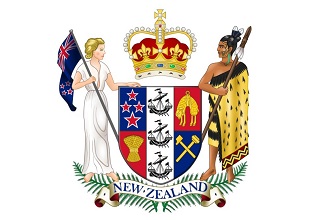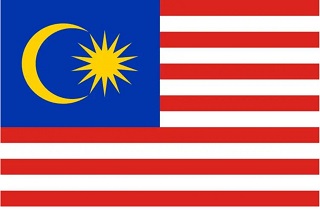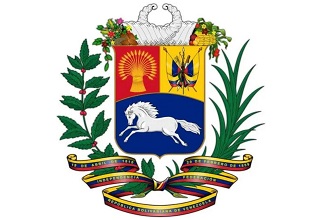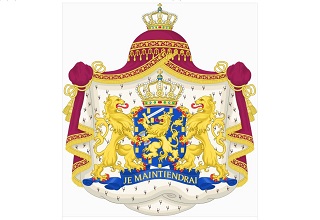Regarding the Inspection and Quarantine Requirements for Nectarine Plum Apricot from Uzbekistan to China
I.. Inspection and quarantine basis
(I) "Biosafety Law of the People's Republic of China";
(II) "Law of the People's Republic of China on Entry and Exit Animal and Plant Quarantine" and its implementing regulations;
(III) "Food Safety Law of the People's Republic of China" and its implementing regulations;
(IV) "Regulations on the Supervision and Administration of Inspection and Quarantine of Imported Fruits";
(V) "Protocol on Plant Quarantine Requirements for the Export of Fresh Drupes from Uzbekistan to China between the General Administration of Customs of the People's Republic of China and the Ministry of Agriculture of the Republic of Uzbekistan".
II. Names of commodities allowed to enter the country
Fresh drupes (hereinafter referred to as drupes) include nectarine (scientific name Prunus persica var. nucipersica, English name Nectarine), plum (scientific name Prunus salicina, English name Plum) and apricot (scientific name Prunus armeniaca, English name Apricot).
III. Permitted origins
Drupe production areas in Uzbekistan.
IV. Approved orchards and packaging plants
Drupe orchards and packaging plants exported to China shall be reviewed and filed with the Plant Protection and Quarantine Bureau of the Ministry of Agriculture of Uzbekistan and approved for registration by the Chinese Customs. The registration information shall include the name, address and registration number so that the export goods can be accurately traced when they do not comply with the provisions of this announcement. Before the export season each year, the Plant Protection and Quarantine Bureau of the Ministry of Agriculture of Uzbekistan shall provide a list of enterprises to the Chinese Customs, which will be published on the website of the Chinese Customs after review and approval.
V. List of quarantine pests of concern to the Chinese Customs
1. Cydia pomonella
2. Diaspidiotus perniciosus
3. Hoplocampa minuta
4. Lepidosaphes ulmi
5. Lobesia botrana
6. Mercetaspis halli
7. Monilinia fructicola, a brown rot pathogen of American and Australian stone fruits
8. Parlatoria oleae
9. Pterochloroides persicae
10. Rhodococcus turanicus
11. Rhynchites bacchus
12. Verticillium dahliae
13. Plum pox virus
VI. Pre-export management
(I) Orchard management.
1. All stone fruit orchards exported to China should establish a sound quality management system and traceability system under the supervision of the Plant Protection and Quarantine Bureau of the Ministry of Agriculture of Uzbekistan, implement good agricultural practices (GAP), maintain sanitary conditions in the orchard, and promptly clean up fallen and rotten fruits; and implement integrated pest management (IPM), including regular pest monitoring and investigation, physical, chemical or biological pest control, and agricultural operations and other control measures.
2. The Plant Protection and Quarantine Bureau of the Ministry of Agriculture of Uzbekistan shall formulate a management plan for quarantine pests of concern to the Chinese Customs in accordance with the requirements of the International Standard for Phytosanitary Measures No. 6 (ISPM 6), and organize and implement orchard monitoring throughout the year. If pests or their corresponding symptoms are found during monitoring, comprehensive management measures including chemical, physical or biological control shall be taken to control the density of pest populations or maintain a low prevalence level.
3. Pest monitoring and control shall be carried out under the guidance of professional technicians, who shall be trained by the Plant Protection and Quarantine Bureau of the Ministry of Agriculture of Uzbekistan or its authorized institutions.
4. Orchards exporting to China shall keep records of pest monitoring and control, and the Plant Protection and Quarantine Bureau of the Ministry of Agriculture of Uzbekistan shall provide them to the Chinese Customs when necessary. The control records include the name, active ingredients, dosage and time of the chemical agents used during the growing season.
5. For codling moth, stone fruits exported to China must come from codling moth-free production areas or orchards that are effectively controlled by systematic control measures. The pest-free production area should be established by the national plant protection organization in accordance with the International Standard for Phytosanitary Measures No. 10 (ISPM 10), and the Plant Protection and Quarantine Bureau of the Ministry of Agriculture of Uzbekistan should carry out pest monitoring in accordance with relevant requirements, and must be approved by the Chinese Customs. If codling moth is found in the relevant pest-free production area, the Plant Protection and Quarantine Bureau of the Ministry of Agriculture of Uzbekistan should immediately suspend the status of the pest-free production area, notify the Chinese Customs within 48 hours, and activate the emergency plan. The pest-free production area can be restored only when the Plant Protection and Quarantine Bureau of the Ministry of Agriculture of Uzbekistan eliminates the epidemic and is approved by the Chinese Customs.
If the pest-free production area cannot be established, the Plant Protection and Quarantine Bureau of the Ministry of Agriculture of Uzbekistan should adopt systematic control measures and use pheromone trapping monitoring methods to monitor codling moth in orchards exported to China, and provide monitoring records to the Chinese Customs upon request. Orchards exported to China should carry out codling moth monitoring from the flowering period to the end of harvest. The density of traps in orchards is 1 per hectare. Orchards with an area of less than 3 hectares must install at least 3 traps. The trap cores must be replaced once a month and the traps must be checked once a week. If 3 or more codling moths are found in the traps, effective control measures must be taken immediately (such as using mating interference techniques, etc.). For orchards that are not thoroughly controlled, the Plant Protection and Quarantine Bureau of the Ministry of Agriculture of Uzbekistan should suspend the orchard’s export qualification to China and immediately notify the Chinese Customs. Upon request, the Plant Protection and Quarantine Bureau of the Ministry of Agriculture of Uzbekistan should provide the Chinese Customs with pest investigation reports or management records.
6. For grape flower-winged moth, stone fruits exported to China must come from grape flower-winged moth-free production areas or orchards that implement systematic control measures. The pest-free production areas should be established by national plant protection organizations in accordance with International Standard for Phytosanitary Measures No. 10 (ISPM 10), and pest monitoring should be carried out by the Plant Protection and Quarantine Bureau of the Ministry of Agriculture of Uzbekistan in accordance with relevant requirements, and must be approved by the Chinese Customs. If the grape moth is found in the relevant non-pested production area, the Plant Protection and Quarantine Bureau of the Ministry of Agriculture of Uzbekistan shall immediately suspend its status as a non-pested production area, notify the Chinese Customs within 48 hours, and activate the emergency plan. The non-pested production area can only be restored when the Plant Protection and Quarantine Bureau of the Ministry of Agriculture of Uzbekistan eradicates the epidemic and is approved by the Chinese Customs.
If the non-pested production area cannot be established, the Plant Protection and Quarantine Bureau of the Ministry of Agriculture of Uzbekistan shall adopt systematic control measures and use pheromone trapping monitoring methods to monitor grape moth in orchards exported to China, and provide monitoring records to the Chinese Customs upon request. The Plant Protection and Quarantine Bureau of the Ministry of Agriculture of Uzbekistan or its authorized personnel shall carry out pest control in registered orchards through field surveys and trap monitoring from the flowering period of stone fruits to the harvest period. The density of traps in the orchard is at least 2 per hectare, and they shall be checked at least once every two weeks. The Plant Protection and Quarantine Bureau of the Ministry of Agriculture of Uzbekistan shall provide monitoring reports to the Chinese Customs before the export season each year as required. Once the grape flower-winged moth is detected, effective prevention and control measures should be taken immediately (such as using mating interference technology, etc.). For orchards that are not thoroughly controlled, the Plant Protection and Quarantine Bureau of the Ministry of Agriculture of Uzbekistan should suspend the orchard's export qualification to China and immediately notify the Chinese Customs. Upon request, the Plant Protection and Quarantine Bureau of the Ministry of Agriculture of Uzbekistan should provide the Chinese Customs with pest investigation reports or management records.
7. For fungi and viruses, specific prevention and control measures are shown in Appendix 2. If any suspicious symptoms are found, samples must be taken for laboratory testing. If quarantine viruses of concern to the Chinese Customs are found in orchard monitoring, comprehensive management measures must be taken to control the occurrence of viruses and ensure that stone fruits do not carry these viruses.
8. For aphids, scale insects and other pests, orchards exporting to China should be monitored under the supervision and guidance of technical personnel from the Plant Protection and Quarantine Bureau of the Ministry of Agriculture of Uzbekistan. From flowering to harvest, orchard surveys should be conducted every two weeks, focusing on investigating whether the above-mentioned pests occur in branches, stems, leaves and fruits. If any pests or their corresponding symptoms are found, measures should be taken immediately, such as biological, physical or chemical methods, to control the occurrence of pests.
(II) Packaging plant management.
1. The processing, packaging, storage and shipment of drupes exported to China must be carried out under the quarantine supervision of the Plant Protection and Quarantine Bureau of the Ministry of Agriculture of Uzbekistan or its authorized personnel.
2. Packaging plants for drupes exported to China should be clean and hygienic, with hardened floors, and have raw material fields and finished product warehouses. The processing, handling, storage and other functional areas of drupes exported to China are relatively independent and reasonably laid out, and isolation measures are taken from living areas and at an appropriate distance.
3. During the packaging process, drupes exported to China should be manually selected, graded and cleaned to remove diseased, worm-eaten, rotten, deformed fruits, branches and leaves or other plant residues and soil.
4. If packaged drupes need to be stored, they should be immediately put into storage and stored separately to avoid reinfection by pests.
5. Registered packaging plants should establish a traceability system to ensure that the stone fruits exported to China can be traced back to the registered orchards, record the processing and packaging date, the name of the source orchard or its registration number, quantity, export date, export quantity, export country, container number and other information.
(III) Packaging requirements.
1. The packaging materials should be clean, hygienic, unused, and meet the relevant plant quarantine requirements of China. If wooden packaging is used, it must comply with the requirements of International Standard for Phytosanitary Measures No. 15 (ISPM 15).
2. Each packaging box must be marked in Chinese or English with the name of the fruit, the exporting country, the place of origin, the name or registration number of the orchard and the packaging plant. Each packaging box and pallet must be marked in Chinese or English with "输往中华人民共和国" or "Exported to the People's Republic of China".
3. Containers containing stone fruits exported to China must be checked for good sanitary conditions when packing, and the inspection records must be officially confirmed by the Plant Protection and Quarantine Bureau of the Ministry of Agriculture of Uzbekistan.
(IV) Pre-export quarantine.
1. Before export, the Plant Protection and Quarantine Bureau of the Ministry of Agriculture of Uzbekistan shall sample and inspect 2% of each batch of stone fruits exported to China, with a minimum sampling volume of 1,200 fruits, and at least 60 of them or suspicious fruits found during the inspection shall be dissected for inspection. If there are no plant quarantine problems within two years, the sampling rate will be reduced to 1%.
2. If quarantine pests, branches, leaves or soil of concern to the Chinese Customs are found, the batch of goods shall not be exported to China, and the export of stone fruits from the relevant orchards and packaging plants to China in this export season shall be suspended depending on the situation. If it comes from a non-pest producing area, the status of the relevant non-pest producing area shall be cancelled. The Plant Protection and Quarantine Bureau of the Ministry of Agriculture of Uzbekistan shall find out the reasons and take improvement measures. At the same time, keep the records of seizures and provide them to the Chinese Customs upon request.
(V) Requirements for plant quarantine certificates.
1. If the quarantine is qualified, the Plant Protection and Quarantine Bureau of the Ministry of Agriculture of Uzbekistan shall issue a phytosanitary certificate in accordance with the International Standard for Phytosanitary Measures No. 12 (ISPM 12), indicating the name or registration number of the orchard and packaging plant, and in the additional statement: "This consignment complies with the requirements specified in the Protocol of Phytosanitary Requirements for Export of Fresh Stone Fruits from Uzbekistan to China, and is free from any quarantine pests of concern to China."
2. Before the formal start of trade, the Plant Protection and Quarantine Bureau of the Ministry of Agriculture of Uzbekistan shall provide the Chinese Customs with a sample of the phytosanitary certificate for record.
VII. Entry Inspection and Quarantine and Disqualified Treatment
When the stone fruits exported to China arrive at the Chinese entry port, the Chinese Customs shall implement inspection and quarantine in accordance with the following requirements.
(I) Verification of relevant certificates and labels.
1. Verify whether the imported stone fruits have obtained the "Entry Animal and Plant Quarantine Permit".
2. Verify whether the plant quarantine certificate complies with the provisions of Article 6, Item (V) of this Announcement.
3. Check whether the markings on the packaging boxes and pallets comply with the provisions of Article 6, Item (3) of this Announcement.
(II) Entry Inspection and Quarantine.
1. Stone fruits exported to China should enter the country from ports where Chinese customs allows the import of fruits.
2. According to relevant laws, administrative regulations, rules and other provisions, inspection and quarantine shall be implemented on imported stone fruits. If they pass the inspection and quarantine, they shall be allowed to enter the country.
(III) Disqualified treatment.
1. If it is found that the goods come from unapproved orchards or packaging plants, the batch of goods shall not be allowed to enter the country.
2. If live codling moths or grape flower-winged moths are found, the batch of goods shall be returned or destroyed. If they come from non-epidemic production areas, the status of the relevant non-epidemic production areas shall be cancelled.
3. If other quarantine pests or newly occurring quarantine pests are found, the batch of goods shall be returned, destroyed or quarantined and pest-free.
4. If it is found that the goods do not meet the national food safety standards of China, the batch of goods shall be returned or destroyed.
5. If the above non-compliance is found, China Customs will immediately notify the Plant Protection and Quarantine Bureau of the Ministry of Agriculture of Uzbekistan and suspend the import of stone fruits from relevant orchards and packaging plants as appropriate. The Plant Protection and Quarantine Bureau of the Ministry of Agriculture of Uzbekistan should find out the reasons for non-compliance and take improvement measures to prevent similar situations from happening again. China Customs will decide whether to cancel the suspension measures based on the rectification results of the Plant Protection and Quarantine Bureau of the Ministry of Agriculture of Uzbekistan.
GACC
July 23, 2024
Monitoring plan for fruit-boring pests in non-pested production areas
According to the requirements of the relevant provisions of this announcement, the Plant Protection and Quarantine Bureau of the Ministry of Agriculture of Uzbekistan shall take necessary monitoring measures in non-pested production areas to monitor fruit-boring pests (Cydia pomonella, Lobesia botrana) and provide one year of monitoring records to the Chinese Customs before trade commences.
I. Trapping monitoring
(I) Types of attractants and traps.
Use sex pheromone lures for codling moth and Lobesia botrana, and place the two lures in triangular traps or other traps approved by the Chinese Customs. The sex pheromone content in the lures shall not be less than 1 mg.
In view of the low correlation between Lobesia botrana and nectarines and apricots, traps will not be installed compulsorily.
(II) Monitoring locations.
Stone fruit orchards, packaging plants, distribution points, cold storage areas, exit ports, etc.
(III) Hanging method
Hang the trap in the middle and upper part of the host tree canopy, where it is not blocked by branches and leaves and where the sun is not strong. Pay attention to shading and avoid direct sunlight or rain.
(IV) Setting density.
For the grass fruit borer, the trap setting density in the export stone fruit orchard is 1 per hectare, and at least 3 traps are hung in orchards less than 3 hectares.
For the grape flower-winged moth, 12 traps are placed in the export stone fruit orchard with 40 hectares (ha) as a monitoring unit, and 2 traps are added for every additional 40 hectares of orchard. In packaging plants, distribution points and exit ports, 1-3 traps are arranged per 40 hectares.
(V) Replacement of bait core.
Replace once a month.
(VI) Inspection cycle.
From flowering to harvest, at least once a week.
(VII) Inspectors.
The Plant Protection and Quarantine Bureau of the Ministry of Agriculture of Uzbekistan or its authorized technicians.
2. Yellow boards (yellow glue traps, only for grape flower-winged moth)
All registered stone fruit orchards should place yellow boards to trap and monitor pests.
Trapping and monitoring should last from the flowering period of stone fruits to the end of the harvest period.
The number of yellow boards hung in each orchard should not be less than 4. When the area of the plantation is greater than 4 hectares, 1 yellow board should be hung for every 0.8 hectares of area.
During the production season, the yellow boards should be checked once a week; before harvesting, they should be checked twice a week.
The yellow boards need to be replaced at least once every two weeks. If the surface of the yellow board is covered with plant debris, the yellow board should be replaced in time.
Control measures for fungi and viruses
1. American-Australian stone fruit brown rot fungus Monilinia fructicola
(1) Before winter and during winter, prune and do a good job of orchard hygiene, monitor the brown rot fruit in the orchard, prune the diseased branches or use fungicides (for example, copper spray) for prevention and control, and remove the dry fruits.
(2) Monitor the orchards for symptoms of these pathogens every two weeks from flowering to harvest. Once pathogens are found, they need to be identified.
(3) Once any such pathogens are detected, chemical control measures will be implemented in the orchard, or the export of fruit grown in the plot will be suspended for the remainder of the export season.
(4) Orchard inspection records should be kept and provided to the Plant Protection and Quarantine Bureau of the Ministry of Agriculture of Uzbekistan for review upon request.
(5) At harvest, check the fruit for fruit symptoms and remove any fruit found to be infected with any of these pathogens.
(6) If any of the above pathogens are found during quarantine inspection by the Plant Protection and Quarantine Bureau of the Ministry of Agriculture of Uzbekistan or its authorized personnel, the batch of goods shall not be exported.
(7) If any of the above pathogens are found during import inspection by the Chinese Customs, the batch of goods will be returned or destroyed. The Chinese Customs will notify the Plant Protection and Quarantine Bureau of the Ministry of Agriculture of Uzbekistan and suspend the export of the relevant plots and orchards for the remainder of the season.
2. Plum pox virus
For plum pox virus, orchards exported to China must monitor from flowering to harvest, once every two weeks, focusing on investigating whether branches, stems, leaves and fruits have suspicious symptoms. If any suspicious symptoms are found, samples must be taken for laboratory testing. If plum pox virus is found in orchard monitoring, comprehensive control measures must be taken to control the occurrence of the virus and ensure that the stone fruits exported to China do not carry the virus.




